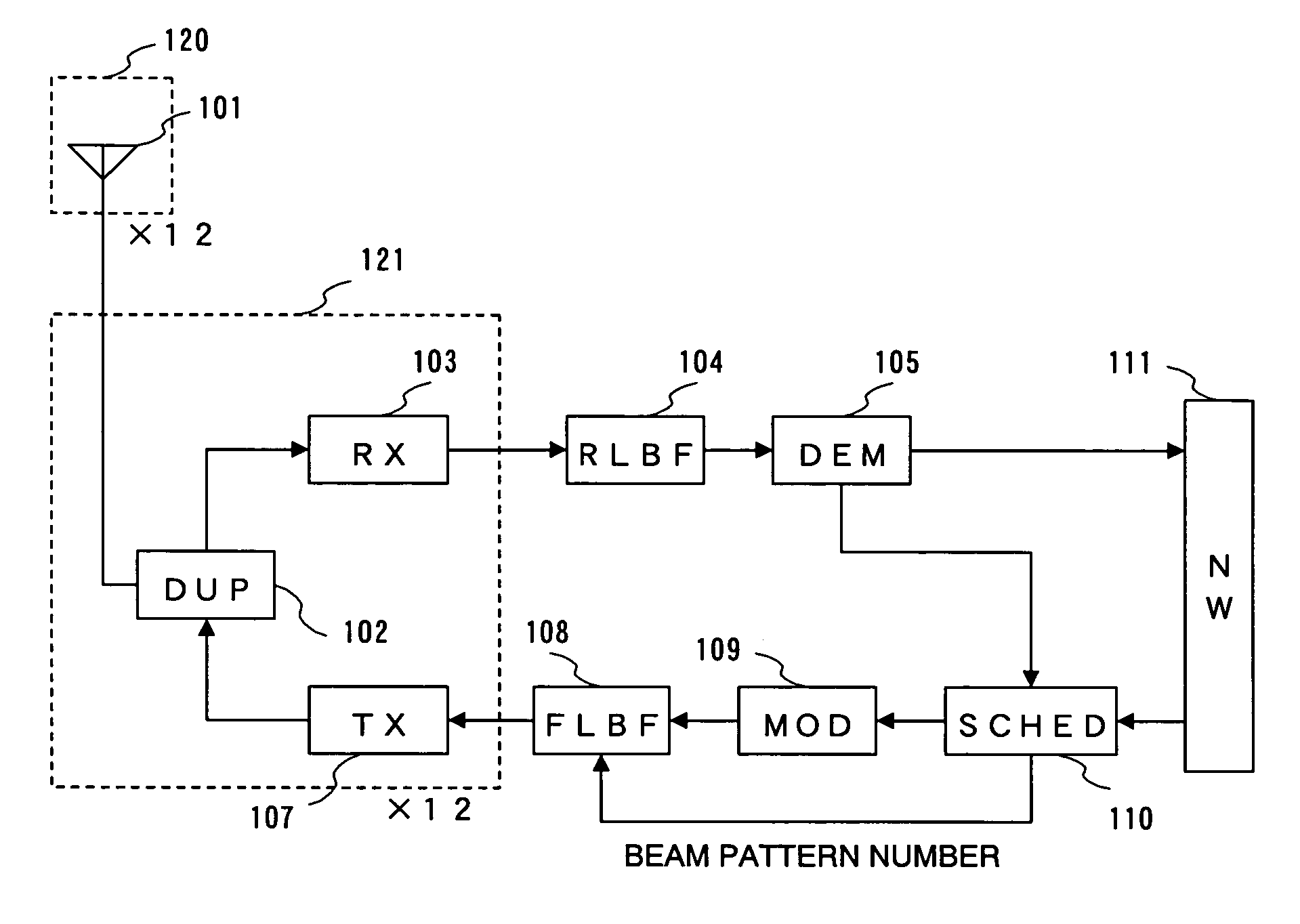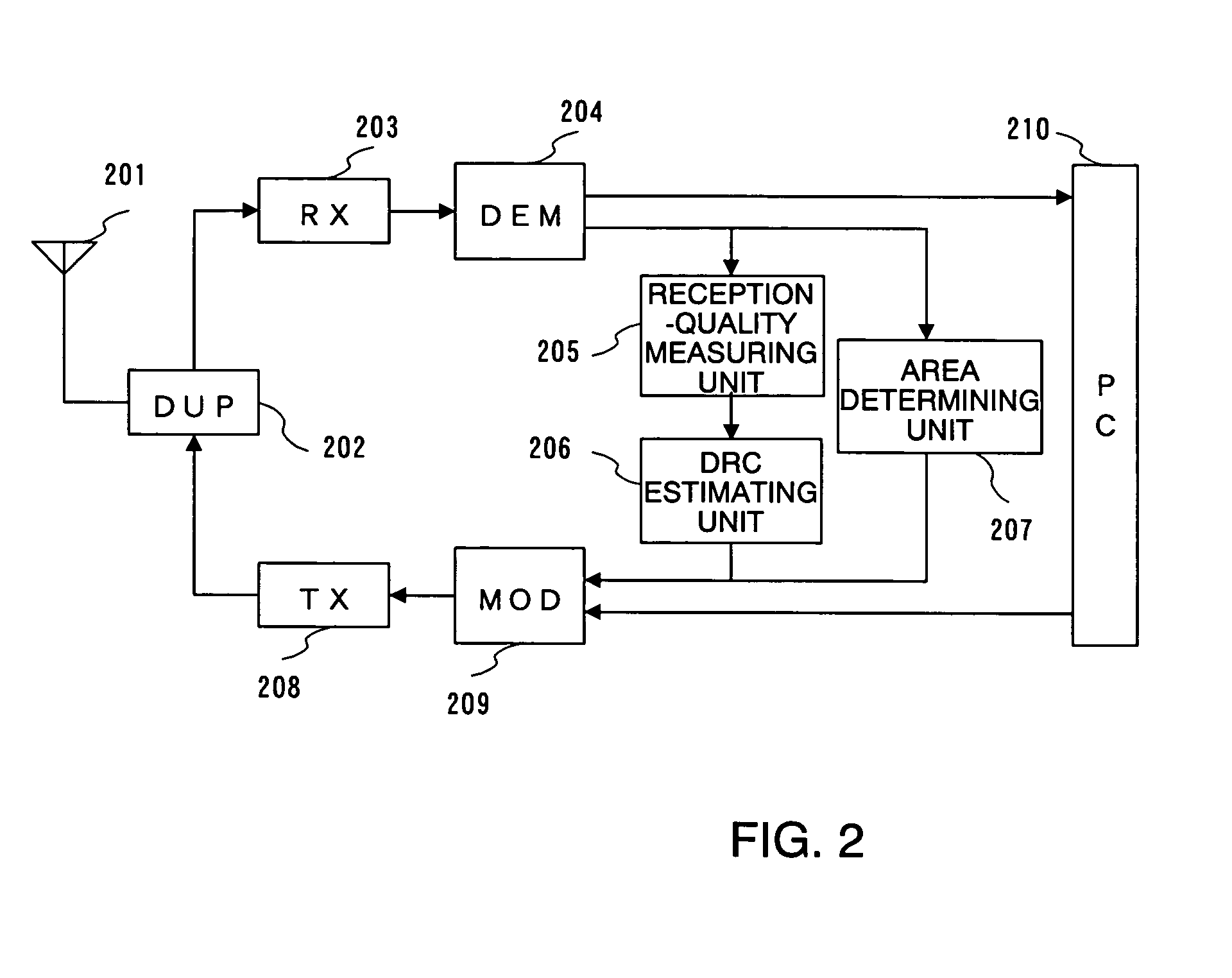Wireless communication method, base station and, wireless communication system
a wireless communication and base station technology, applied in the field of wireless communication systems, base stations, wireless communication services, etc., can solve the problems of difficulty in predicting the reception quality of user data signals from pilot signals, difficulty in predicting the reception quality sometimes different levels of interference or the like during transmission of user data signals, etc., to achieve the effect of improving throughpu
- Summary
- Abstract
- Description
- Claims
- Application Information
AI Technical Summary
Benefits of technology
Problems solved by technology
Method used
Image
Examples
Embodiment Construction
[0055]A preferred embodiment of the present invention will be described below; however, the present invention is not limited thereto.
System Configuration
[0056]FIG. 8 is a diagram showing the configuration of a wireless communication system according to the present embodiment, showing forward-link radiation beam patterns.
[0057]The wireless communication system includes a base station (AP) 801 and a mobile station (AT) 802. Although one base station 801 and one mobile station 802 are shown in the figure, a plurality of base stations 801 and a plurality of mobile stations 802 may be provided. The mobile station 802 is not limited to a mobile device; it may be any type of wireless terminal that is capable of wirelessly communicating with the base station 801.
[0058]The base station 801 transmits a common pilot signal (COMPLT) using an omnidirectional pattern 810, in other words, a radiation pattern that the mobile station 802 can receive, no matter in which direction the mobile station 8...
PUM
 Login to View More
Login to View More Abstract
Description
Claims
Application Information
 Login to View More
Login to View More - R&D
- Intellectual Property
- Life Sciences
- Materials
- Tech Scout
- Unparalleled Data Quality
- Higher Quality Content
- 60% Fewer Hallucinations
Browse by: Latest US Patents, China's latest patents, Technical Efficacy Thesaurus, Application Domain, Technology Topic, Popular Technical Reports.
© 2025 PatSnap. All rights reserved.Legal|Privacy policy|Modern Slavery Act Transparency Statement|Sitemap|About US| Contact US: help@patsnap.com



